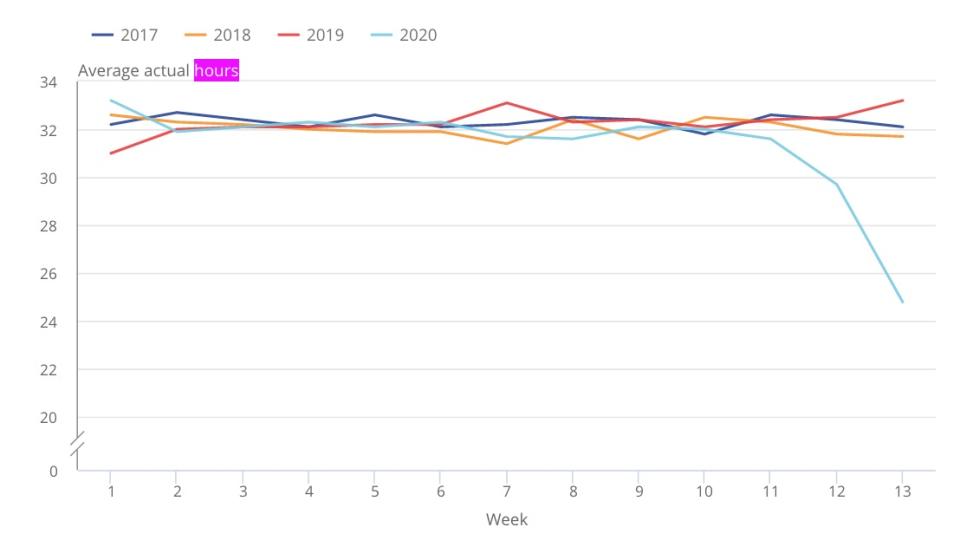Coronavirus: UK lockdown sparked steepest drop in working hours in a decade

Britain’s coronavirus lockdown triggered the steepest drop in working hours in a decade, according to official figures.
The new figures lay bare the economic cost of the country’s efforts to control the virus, with millions of workers’ jobs and incomes taking a heavy hit.
Total hours worked in the final week of March plummeted by 25% compared to the average over the previous three months. Prime minister Boris Johnson ordered Britain to go into lockdown on 23 March, leading many firms to temporarily shut up shop.
READ MORE: UK jobless claims surged 69% as COVID-19 lockdown began
“Economic conditions” were highlighted as a major factor in the increase by the Office for National Statistics (ONS) in its latest employment data published on Tuesday.
The ONS said the category included workers put on furlough through the government-funded coronavirus job retention scheme.

More than 7.5 million people are now on the programme, designed to protect the livelihoods of those at risk of redundancy as the pandemic has ravaged the economy. Workers remain employed but cannot work for their employer under the first phase of the scheme, with the latest figures capturing their stark drop in working hours at the end of March.
The ONS labour force survey also shows a rise in the number of workers stating they are temporarily away from work, which could include those off sick. Meanwhile ONS data also shows a 69% spike in jobless claims between March and April, with unemployment hitting 2.1 million.
READ MORE: UK ‘can afford higher debt’ as economists warn over austerity
The collapse in working hours as the lockdown began was enough to significantly drag down the average figures for the three months to the end of March. Total weekly hours worked dropped by 12.4 million hours compared to a year earlier, a 1.2% drop and the largest annual decline since early 2010.
Average hours worked also dropped to 31.4 hours a week, with female workers’ average hours falling furthest to 27 hours and men’s hours to a record low 35.4 hours.

 Yahoo Finance
Yahoo Finance 